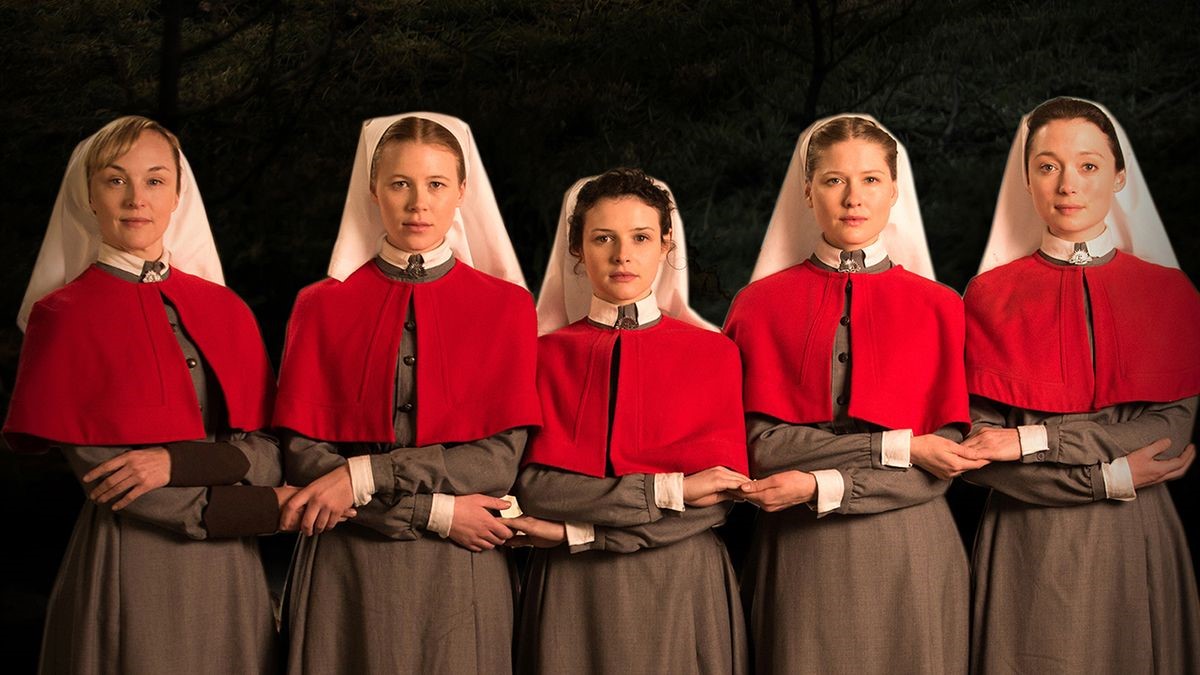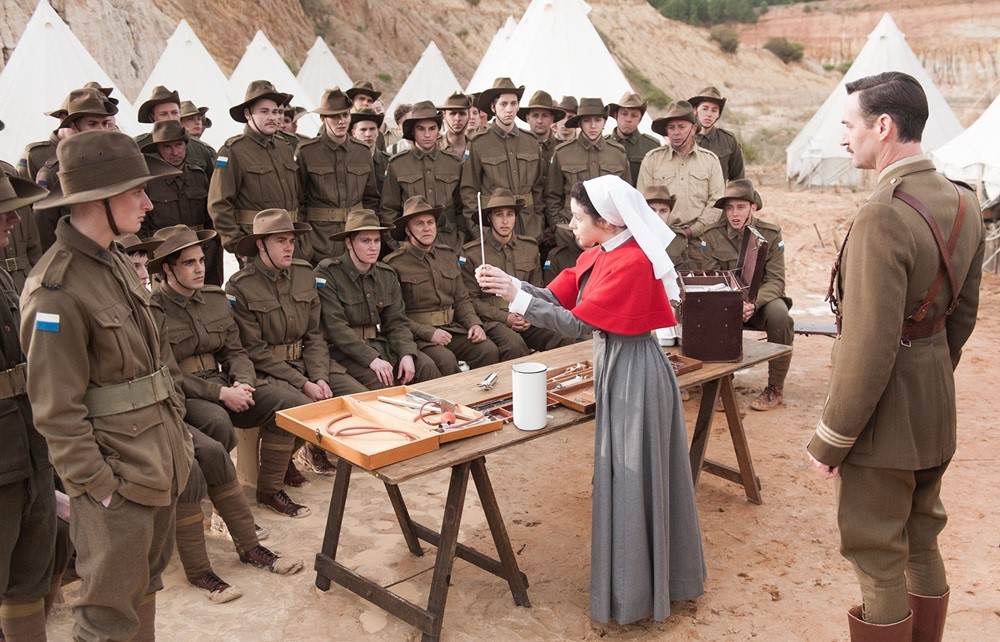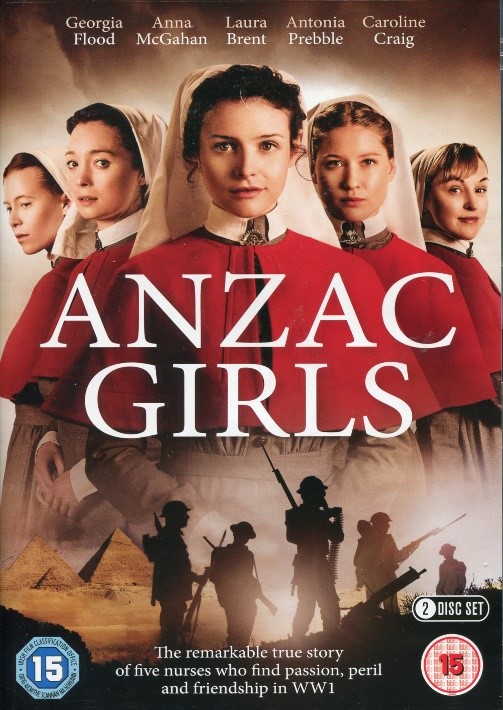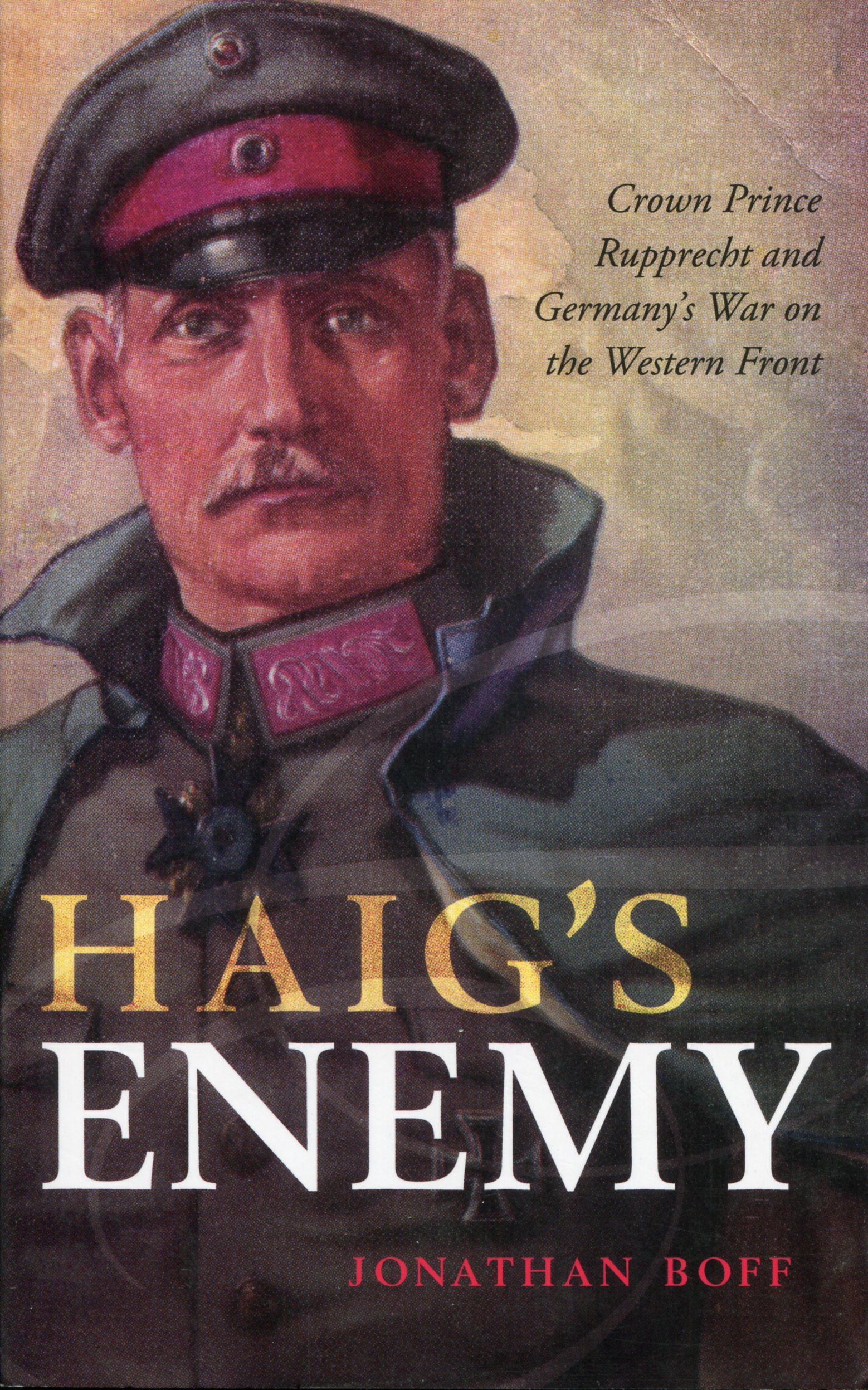The Dragon’s Voice
Welcome to the March issue. In fact, this is the first issue since November. This is down to my ill health which, hopefully, is now on the long road to recovery.
Following the meeting on 4th March in Llandudno, the new branch committee is:
Chair – Darryl Porrino
Vice chair - Steve Binks
Secretary – John Storey
Treasurer – Sian Nevitt
In this issue, we review the film series Anzac Girls and review the book Haig’s Enemy, Crown Prince Rupprecht and Germany’s war on the Western Front.
On films, All Quiet on the Western Front predictably won a host of awards. It is indeed a great film. The fly in the ointment is that it deviates from the book, as Stephen Badsey points out in his review in Stand to. The author of the book, Erich Maria Remarque, published the book in 1929 as an anti-war story, following on from his own experiences in WWI. He was wounded in WWI by shrapnel. In the 1930s, like many ardent Catholics, he was anti-Nazi and he had to flee to Switzerland. His sister was murdered by the Nazis during WWII. His German citizenship was revoked by the Nazis who did not like his “unpatriotic” book or stance; does this sound familiar from more recent times? The book was banned by the Nazis in 1933. It is said to have been the first novel by WWI veterans writing about the conflict. It has been made into a film a number of times. The point about the book is that the key character is the last of his group to survive, but he is killed on a day when the official report from the front is all quiet on the western front. The German title is somewhat more poignant – in the west, nothing new. In the film, the key character is killed minutes before the Armistice, which rather negates the point of the title. The flyleaf of the book itself reads:
This book is intended neither as an accusation nor as a confession, but simply as an attempt to give an account of a generation that was destroyed by the war – even those of it who survived the shelling.
Other recent films which have crossed my path include The War Below which is set in France and centres round a group of miners digging tunnels for landmines on the Somme and Messines. It is a rather simplistic fiction and, frankly, I would not waste your time. The Netflix film series Women at War is well produced. It is in French with English subtitles and features Audrey Fleurot as a scheming “lady of the night”. You may recall her as a lawyer in the series Spiral which ran on BBC 4 in the recent past. I haven’t seen all the episodes but it is realistic and well-acted.
Film Review
Anzac girls
Australian Broadcasting Company 1
2014
Based on The Other Anzacs by Peter Rees
Well, this is a first for our newsletter, as we have never had a film review before. “Film” is slightly misleading as Anzac Girls is in fact a series of six episodes.
I have a family connection with nurses in wartime. My mum’s two American cousins were in nursing in the American Army in WWII, including one who was in combat zones in France. (She was also awarded a sniper’s insignia by her CO after spending two solid days injecting soldiers in the backside!)
The film is based on a book about the neglected story of the Australian and New Zealand nurses in WWI. The material for the book is the letters and diaries of some of the nurses. Indeed, the daughter, aged 90, granddaughter and great granddaughter of Sister Elsie Cook visited the set during filming.
The nurses in the Australian nursing corps were both Australian and New Zealanders, as New Zealand did not have an army nursing corps at the start of WWI. So, can you tell the difference between an Australian and a Kiwi accent? The girls start off in 1914 as enthusiastic, if somewhat naïve, sailing from Australia to Egypt in November 1914 and serving initially in the 1st Australian General Hospital at Heliopolis, near Cairo. Some of the nurses moved to a casualty clearing station near Suez to deal with casualties from Gallipoli, where they were taken aback at the scale and severity of the casualties that they dealt with.
A detachment was sent to the island of Lemnos which was close to Gallipoli. When they arrived there was no “hospital”, so they initially had to treat men in the open and live in the open. Tents and huts were subsequently constructed to house the casualties and the nurses. Lemnos went from being fiercely warm in the summer to being bitterly cold in the winter. It was not a holiday island!
Our nurses were sent to France, and a number were sent to Trois Arbres to 2nd Australian CCS, near Bailleul. Whilst there, the CCS was bombed at night and nurses, both on and off duty, went to protect the patients. Four of the ANZAC nurses were awarded the Military Medal. They initially thought that the letters they received were some sort of a joke, as no woman had ever been awarded the MM. Nurses could normally have been awarded the Royal Red Cross medal for exceptional service. However, the MM is for gallantry under fire, which certainly describes the actions of these young ladies. Indeed, one of them, Sister Alice Ross-King, was also awarded a mentioned in despatches later in WWI.
In spite of all this, the nurses did suffer from army bureaucracy, both Australian and British. One of them, Elsie Cook, was discovered to be, wait for it, already married to an army officer, so she was sacked when she returned to Australia on a hospital ship with her wounded husband (and several hundred other soldiers). She returned as a “bluebird”, that is an Australian civilian volunteer nurse who worked with the French. The bluebirds’ salaries were paid by the Australian Jockey Club, as the Australian government did not recognise them. If you think the ANZAC nurses’ uniforms are stylish, and they were, the bluebird uniform is stunning. Whether wearing any of the uniforms of the era was that great when nursing wounded or ill men is another question.
Sister Alice Ross-King (Georgia Flood) explaining the treatment for syphilis to new arrivals, to discourage them from misbehaving (and I will give you one guess where that metal tube goes, four times a day with some nasty chemicals)
The film deals with the sad episode when ten New Zealand nurses were drowned aboard the troop ship HT Marquette when it was torpedoed by a U-boat in the Aegean. After that incident, the New Zealand government stipulated that nurses should only sail on hospital ships. There is a memorial to all the victims of the Marquette at Mikra CWGC cemetery near Thessaloniki in Greece. (The memorial commemorates the almost 500 men, officers and nurses who drowned in the Mediterranean, from various ships. They are commemorated here as others who died were washed ashore and are buried in Thessaloniki. One of the Glan Conwy casualties is commemorated on the memorial, Thomas John Williams who died when the HT Arcadian was sunk, and another casualty, Hugh Evans, is buried in the cemetery)
The film is wonderfully shot, mostly in Australia, and the acting is peerless. The series was apparently shown on Channel Four but it is available on DVD from Amazon. Do watch it if you have the chance.
Book review
Haig’s Enemy:
Crown Prince Rupprecht and Germany’s War on the Western Front
Jonathon Boff
Oxford University Press, 2020
£14.99
 The first thing that I should say is that I do like the book. The author has a very readable style and, thankfully, uses short chapters so that the author’s theme at that point does not get lost in a sea of pages, as is too often the case with history books. There are in fact 26 chapters, with clear titles, as you would expect.
The first thing that I should say is that I do like the book. The author has a very readable style and, thankfully, uses short chapters so that the author’s theme at that point does not get lost in a sea of pages, as is too often the case with history books. There are in fact 26 chapters, with clear titles, as you would expect.
I read the paperback version which has a set of maps at the front of the book that illustrate the military situation at various times and places. According to the reviews on Amazon, the Kindle version does not have the maps, which would make the battle histories difficult to understand, unless of course you are a WFA nerd who knows the ins and outs of the locations anyway!
The title is wonderful marketing, but not entirely accurate. Surely Falkenhayn and then Ludendorff were Haig’s counterparts and therefore his “enemy”? Rupprecht was an army commander, not the overall chief on the Western Front.
Rupprecht was the Crown Prince of Bavaria, as his father, Ludwig, was King of Bavaria. Germany at this stage had a number of provincial royal families, Kaiser Wilhelm II being the King of Prussia as well as being the Kaiser of all Germany. In the case of Rupprecht, these differences led to political and cultural problems. The Prussians are Protestant and the Bavarians are Catholic. The Prussians therefore tended to look down on the Bavarians and regarded them as ignorant peasants. So, when Ludendorff in 1916 considered making Rupprecht the overall commander on the Western Front, it did not happen because that would have put a Bavarian in charge of all the Prussian troops on that front, especially the Prussian Crown Prince. For the record, Falkenhayn, Hindenburg and Ludendorff were all Prussians.
The fact that Ludendorff even considered Rupprecht for such a command position indicates the basic fact about Rupprecht – he was a competent general. Unlike the Prussian Crown Prince, he did not have a “ghost” general installed nominally under his command, where in reality the “ghost” was the real commander. Rupprecht was his own man. This became clearer in the latter phases of the war when Ludendorff became even more obsessed with being in control of minutiae, and his mental instability led to him having an unrealistic view of Germany’s position. Rupprecht was not a clairvoyant but undoubtedly had a much more balanced view of the situation.
The book does have a lot of detail on the major battles on the Western Front which may seem superfluous to the WFA reader with his or her extensive knowledge but, like the sketch maps in the book, are needed for the more general reader. As is often the case with history books, the analysis is at the end of the book when it would be better having it at the front, but of course the reader can do that for themselves by first reading the chapters on Rupprecht’s character and views.
On Rupprecht’s character and abilities, to quote the author:
He proved far from a figurehead, much less a dilettante. He set a high personal standard for his officers to follow: his army and, later, his Army Group seem to have been well run and to have operated smoothly, at least until the army as a whole began to break down. His military judgment was generally good: he made sensible decisions; his troops were well prepared to fight; he oversaw an efficient logistics system which kept them equipped during combat; and he managed and directed the deployment of his reserves with care and skill. His ability was rewarded with extended responsibilities in 1916……………………
Nonetheless, it would be silly to claim that Rupprecht was one of the great captains of history. The First World War did not produce many of those. It did shatter the reputations and careers of many, though, and Rupprecht was good enough to avoid such a fate.
On the BEF and the French army:
…Rupprecht forces us to revise long cherished views about the armies of the Entente too. Most obviously, his diary reminds us how important the French were. Not only were they the main enemy from August 1914 to the end of 1916 but even thereafter he still viewed the French army as a more dangerous opponent than the BEF. Rupprecht tended to look down upon the British, considering them brave enough most of the time but clumsily handled. Even into 1918, the BEF sometimes remained poor at coordinating attacks and exploiting any temporary success it managed to achieve. The main factor behind the British success, Rupprecht thought, was weight of numbers, in men and especially in artillery. There is little evidence that Rupprecht was aware of, much less worried by, any British tactical improvement. He was less likely to note threatening British tactical innovations than instances of them repeating the same mistakes.
After WWI, there was considerable political upheaval in Germany, and certainly in Bavaria. Rupprecht fled to the Netherlands in November 1918 as Mr Landsberg. The Bavarian government guaranteed his safety, but it was not until the autumn of 1919 that he returned to Bavaria. The royal family had been deposed. His father died in October 1921, so he was then the pretender to the throne of Bavaria. More importantly, the family were able to reach a settlement with the government involving payment to them of a lump sum, and rights to certain castles and other buildings. The state took the rest.
He married his fiancée in 1921, who was 20 years younger than he, and they eventually had five children. He had a son from his first marriage but another son had died of polio during the war. Between the wars, he was a popular public figure in Bavaria. The rise of the Nazis caused him to retreat into internal exile in the late 1930s, and then flee to Italy. He narrowly missed being arrested by the gestapo in 1944, after the attempt on Hitler’s life when the Nazis hit out at anyone who was not a supporter. The rest of the Wittelsbach family were rounded up and sent to the concentration camp at Dachau, but did survive.
He died at the age of 86 in 1955 at Schloss Leutstetten. He was buried “with ceremony and pomp fit for a king” in the Theatinerkirche St Kajetan in Munich, alongside his first wife Marie-Gabriele and their son, Luitpold.
Well, as I said at the beginning of this review, I do like the book. You cannot help but admire Rupprecht for all that he was constrained by his position in the Royal Family and the politics of the era.